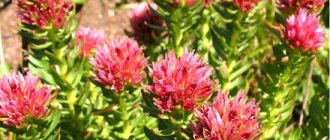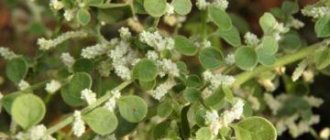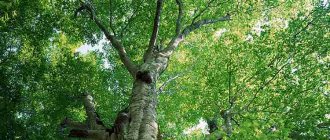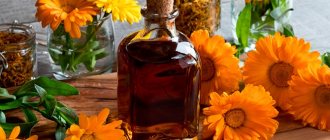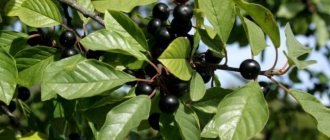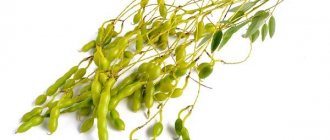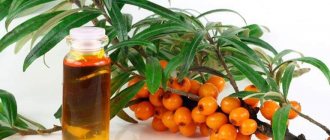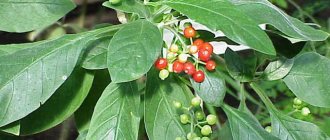The horse chestnut already shows off with its leaves on long petioles. The large leaves of this tree attract attention with their unusual appearance: they are palmate and actually somewhat resemble open palms. This tree can reach a height of even 30 meters.
In May, chestnuts bloom with magnificent “candles” consisting of bell-shaped white and pink flowers. Each cone-shaped candle is up to 30 cm in height, and in turn consists of 20–50 flowers.
Horse chestnut fruits are green in color and have many thorns. These boxes contain a nut, which is popularly called a chestnut. The nut seed is shiny, brown, 2–4 cm in diameter. The fruits ripen in late August-September.
Horse chestnut is a forage plant - according to legend, horse chestnuts were brought to Central Europe by the Turks as feed for horses. The pulp of this nut is white and tender.
The homeland of horse chestnut is the southern part of the Balkan Peninsula: Albania, Greece, Macedonia, Serbia, Bulgaria. There this tree grows in the forests.
In Russia, horse chestnut is widely cultivated in the European part of the country for decorating parks and landscaping urban areas.
Flowers, fruits, leaves, bark, nut shells and even the roots of horse chestnut have healing properties.
Flowers and leaves are collected in May. Seeds (nuts) are harvested from the beginning of September. The bark is harvested from the beginning of October.
Chestnut: fruit of the tree
If we talk about the components from which folk natural medicines are made, then these are not only dense round chestnuts. Currently, the benefits of the tree bark, its inflorescences, leaves and green fruit membranes have been proven. The described components are always collected at different times. The flowering period is the spring months, particularly May. It is then that the inflorescences and leaves from the plant are carefully cut off.
Tree bark is primarily collected in the autumn months. During this period, it contains the maximum amount of useful substances. If we talk directly about the fruits, they are harvested in late summer or early autumn. It all depends on the region in which the trees grow. In warm zones this period occurs in September-October. In colder weather - for July-August. After assembly, the chestnut fruits, photos of which are presented to your attention in the article, are carefully processed. They can be dried, crushed, boiled or infused. It all depends on the purpose of use.
What it is
Trees belonging to the Beech family are called chestnuts, as well as:
- Sapindaceae/gastric or equine;
- Legume/Australian.
Description:
- tree or shrub;
- height - up to fifty meters;
- places of growth - mountain slopes;
- does not tolerate dry soil or waterlogged soil;
- climate – warm temperate;
- trunk straight;
- bark – brown-brown;
- the leaves are arranged in a spiral in two rows;
- leaf shape – oblong-oval with teeth;
- foliage color – dark green;
- leaf length – from 6 to 25 centimeters;
- the shape of the buds is round-conical;
- the flowers consist of pyramidal, erect, spike-shaped inflorescences;
- flower size from five to fifteen centimeters;
- fruit shape – spherical with spines;
- fruit color – green;
- pollination by insects.
The listed characteristics refer to the edible chestnut; a description of the horse chestnut is presented in the text below.
Chestnut fruits: properties
The plant gained popularity in folk medicine many decades ago. In the 18th century, chestnut extracts were first used in traditional medicine. Currently, you can find a lot of preparations containing this plant.
The medicinal properties of chestnut fruits can be listed for a very long time. The plant has antiseptic, astringent, healing, antipyretic and regenerating effects. It also has a beneficial effect on the blood, blood vessels and heart. It is impossible not to note the medicinal properties of chestnut in relation to the stomach, intestines and general digestive system. The fruit of the tree is widely used to treat neurological problems and diseases of the respiratory system. Skin pathologies are often eliminated with the help of a plant such as chestnut (its fruit). Cosmetology is a separate branch of medicine in which the described product is used.
Where to buy, price
In megacities, chestnuts can be found at markets and in health food departments. There are many offers directly from China on the alibaba website.
| Brand name, weight | price, rub. |
| “Tastes of the World”, baked and peeled chestnuts, 80g, Russia | 142 |
| St. Dalfour, peeled 200g, France | 583 |
In addition to cooking and medicine, I use chestnuts to obtain tannins and wood. Marrons, an improved variety of the plant, have the largest and most nutritious fruits. Hybrid nuts reach 4 cm in diameter.
Who is the plant contraindicated for use?
Treatment with chestnut fruits almost always has positive reviews. This is due to the fact that it contains a huge amount of tannins, vitamins (especially C), coumarin glycosides (fraxin, esculin and others), starch, and fatty oil. However, such components are contraindicated for some people. That is why, before resorting to traditional medicine on your own, you need to visit a doctor and consult with him.
Chestnut fruits (photo below) and potions made from them should not be used during pregnancy and after childbirth. During lactation, it is better to avoid such therapy, since there is no data on the effect of the plant on the child. The prepared products should not be taken if platelets are low or if there is bleeding. This can be life-threatening. Chestnut (fruit) is not used for exacerbations of kidney and liver diseases. If the patient suffers from atonic constipation, gastritis, or a violation of the acid balance of the stomach, then it is worth warning him about the dangers of such treatment.
Chestnut fruits (the use of medicines prepared from them) can lead to the development of limb cramps, heartburn, nausea, vomiting, and stool disorders. If you encounter such signs, then categorically refuse traditional treatment and seek help from traditional medicine.
The nutritional value
All types of chestnut fruits contain a large amount of nutrients and beneficial substances, increasing their value as edible and medicinal raw materials. Edible chestnut includes:
- carbohydrates;
- fats;
- vitamins;
- proteins of plant origin;
- starch;
- cellulose;
- minerals and trace elements;
- amino acids;
- tannins.
The edible one differs from the horse one by the presence of a special needle-like shell, which contains several fruits with a pointed top. They eat chestnuts like this. Inedibles are used to make medicines and cosmetics.
Sweet chestnuts will become not only a product that will diversify the menu of vegetarians, but also a unique source of substances that are beneficial to humans and of natural origin.
100 g of raw edible chestnut, which is a healthy product, contains 165 kcal. They can be fried, baked and boiled. The same volume of heat-treated product contains from 180-130 to 56 Kcal. Baked chestnuts are considered the lowest in calories. Every person who decides to regularly consume chestnuts should know that, like any other product of natural origin, it has its contraindications.
Edible chestnuts have different percentages of calories, which depend on the cooking method. Raw edible chestnuts are lower in calories than those that are cooked.
Like any nut, edible chestnuts contain fat. However, of all types of nuts, they are the lowest in calories, so they are often included in menus for weight loss. At the same time, such a nut allows you to quickly fill up and get rid of the feeling of hunger. Vegetarians include this edible fruit in their diet. Various dishes are prepared from noble chestnuts, and special flour is made. Roasted chestnuts are especially popular in Europe.
Horse chestnut (fruit): application in various fields
As you already know, the prepared medicine can be used internally and as a local remedy. It all depends on the pathology and accompanying symptoms. The most popular remedy is chestnut tincture. It is prepared in different ways, but all options for use can be divided into two. In the first case, the drug is taken orally by drip. In the second, it is applied to the surfaces of the body.
Chestnut lotions and decoctions are also very popular. To prepare them, bark, peel and flowers are used. The ingredients are first dried and crushed.
An important point in the use of chestnut is the ban on its use. It must be remembered that the fruits of this tree are inedible. They are very dangerous to health in their usual form. If a person consumes several fruits, severe poisoning can occur (even death). It is necessary to protect the prepared raw materials from children and pets. Domestic rodents and dogs are especially common victims of chestnut. Let's consider what horse chestnut (fruit) is used in folk medicine.
Places of growth
Edible chestnut requires high humidity, warm climate, and acidic soil. It is difficult to tolerate drought, heat, and low temperatures in the spring-summer season. In Russia, the tree can only be seen in the Krasnodar region. It is found on the territory of Armenia and Azerbaijan. However, there the fruits reach small sizes. The tree also grows in Ukraine, the Balkans, and the Atlantic coast of North America.
The best climate for growth is European countries (Italy, France, Spain). There the fruits can reach the size of large tangerines. In France, a national holiday is dedicated to the edible chestnut; it is a symbol of the country.
Diseases of veins and blood vessels
Chestnut (the fruit of the tree) is very often used to treat hemorrhoids and varicose veins. The main quality of the plant is that it helps thin the blood and relieve the inflammatory process. The most useful parts of the tree for these purposes are the brown fruits and flowers. A tincture is prepared from the latter. The fruits can be used as raw materials for a compress.
- To prepare the tincture, you need to take round brown chestnut fruits (5 pieces) and 50 grams of dried inflorescences. All this is placed in an enamel or glass container and filled with vodka. You need to infuse the medicine for two weeks in a dark place, shaking daily. This drug is applied to the dilated veins of the lower extremities using a cotton swab twice a day.
- Take fresh inflorescences and squeeze the juice out of them. The resulting composition should be stored in the refrigerator, taking 30 drops daily. Remember that it is better to carry out manipulation before meals.
- If you suffer from hemorrhoids or have ulcers on your legs, you can use chestnut peel crushed into dust. To do this, clean the skin and dry it. Next, grind it and store it in a dry place. Sprinkle on affected areas daily before going to bed, then apply a bandage.
Calorie content of the product per 100 grams
The energy value of chestnut is provided not only by its incoming components. Its value is greatly influenced by the processing method. The calorie content of 100 grams of raw product differs from heat-treated kernels (in kcal ):
- boiled or stewed – 130;
- fried – 180;
- fresh – 165;
- baked or steamed – 58.
The fruits of the new harvest have a sweet, pleasant taste. After heat treatment, they resemble potatoes.
Viral and bacterial infections of the respiratory tract
Chestnut (fruit) can cure diseases such as tracheitis, bronchitis, tonsillitis, laryngitis. In some cases, the plant even helps to cope with pulmonary tuberculosis. For any illness that is accompanied by a cough, the effect of the plant is observed. However, you need to know how to prepare it.
- Take dried tree bark and grind it. Pour two glasses of chilled water over the fruit and let stand for 8 hours. After this, you must strain the drink. Take 3 tablespoons orally up to 6 times a day.
- Grind dry chestnut leaves. Take one spoon of raw material and pour two glasses of boiling water over it. Wait 10 minutes and strain. Add two tablespoons of honey to the resulting liquid. Drink a quarter glass three times a day.
Women's problems
The chestnut plant is often used in gynecology - a tree whose fruits have the important property of normalizing hormonal levels. Thus, such folk medicines are prescribed for irregularities in the menstrual cycle, prolonged absence of menstruation, infertility, mastopathy, and so on. Remember that you must consult a gynecologist before starting the correction.
- Prepare 8 dried tree flowers and fill them with hot water. Bring the solution to a boil and remove from the stove. After this, strain and leave overnight. The next day, take one sip every hour. Next, take a break for two days and build a diagram.
- For cycle disorders, a tincture is usually recommended. To prepare it, take whole chestnut fruits in a ratio of 1 to 100 milliliters of vodka. Mix the ingredients and leave for one month. You can take the composition 5 drops three times a day, starting from the 16th day of the cycle. Remember that the drug contains alcohol. Before starting such a correction, gynecologists advise taking tests to determine the level of hormones in the blood and getting recommendations from a specialist.
How to choose
Chestnuts are harvested in the fall. At this time, you can buy fresh nuts in supermarkets.
When purchasing, pay attention to the following factors:
- High-quality nuts are large and heavy, without visible mechanical damage.
- The shell is glossy, coffee-colored.
Fresh nuts must be in the package! Prolonged contact with air results in a rancid odor and taste.
Joint diseases: inflammation and injury
Horse chestnut fruits have different properties. Among them there is also an anesthetic. If you suffer from rheumatism, arthritis, inflammation of interarticular joints, then chestnut will help you. In such situations, the plant can be used both internally and externally. To enhance the effect, these two schemes are combined.
- Take 10 green fruits and cut them lightly. Place in a container and fill with a bottle of vodka. Wait a week and then strain. This tincture is taken orally, 20 drops during meals. If it is impossible to drink ethanol, make compresses from the resulting tincture once a day for two hours.
- Grind 5 peeled chestnut fruits into flour, add rich cream or butter. If possible, you can use badger fat. In this case, the effect will be maximum. Rub the sore areas before going to bed, then wrap them with a cloth.
Folk recipes
Flowers, fruits and their peels are used to prepare medicinal infusions. These parts contain the largest amount of substances useful for the circulatory system. To prepare medicines using chestnut, it is recommended to use the following recipes:
- Infusion of chestnut flowers. 1 tbsp. l. dry raw materials and 200 ml of water bring to a boil. Leave for 7 hours. Take sips throughout the day. You can drink 1-1.5 liters per day. Useful for brain tumors, mastopathy, endarteritis, hemorrhoids, lesions of the venous vessels caused by various injuries.
- Flower tincture. Pour vodka over the plant material in a ratio of 1 to 10. Place the container in a dark place. Leave for 2-3 weeks, shaking the contents occasionally. Strain the finished medicine. Take 30 drops 3-4 times a day.
- Peel decoction. Pour 250 ml of hot water over the green shells of two chestnut fruits. Place on low heat and cook for 10 minutes. Cool to a comfortable temperature and drink 100 ml twice a day to improve potency (in the morning and evening).
- Tincture of horse chestnut fruit. The main indications are gout, arthritis, rheumatism and osteochondrosis. To prepare, you should take 1 kg of nuts (more is possible). Grind in any convenient way (blender, meat grinder). Pour into a jar and fill with 1 liter of vodka. Place in a dark place and leave for 2 weeks, shaking occasionally. Strain the finished tincture and store in a cool place. Take 40 drops diluted in water after meals. The same medicine can be used to rub problem joints.
Decoction
Most often, a decoction is prepared from tree bark. It is taken for diarrhea, cough, bronchitis, pneumonia, tuberculosis, inflammation of the liver and spleen, shortness of breath, anemia. Helps with digestive disorders, gastritis with high acidity, hemorrhoids.
Preparation of bark decoction
- Take 1 tbsp. l. chestnut bark.
- Pour a glass of boiling water.
- Boil for 1 minute.
- Leave for 1 hour.
Before use, strain the decoction. Take 1 tbsp. spoon 3 times a day after meals. Externally used to treat the throat and sinuses.
Preparation of fruit decoction
- Take 20 g of crushed fruits (along with the fruit rind).
- Fill with 2 glasses of water.
- Boil for 10 minutes.
- Leave for 4 hours.
Before use you need to strain. This decoction is often used externally in the form of compresses and lotions to treat purulent wounds and ulcers with thrombophlebitis. It is also prescribed for douching for uterine bleeding, sitz baths and enemas for hemorrhoids.
Infusion
The infusion can be prepared from bark, fruits, flowers, leaves, collected or separately.
Recipe for infusion from fruit peels
- Take 1 tbsp. l. crushed raw materials.
- Pour a glass of boiling water.
- Leave for 1 hour.
- Strain.
This infusion is taken 1 tsp. 3 times a day after meals.
Bark infusion recipe
- Take 1 tbsp. l. crushed bark.
- Pour 2 cups boiling water.
- Leave for 8 hours.
- Strain.
This infusion is taken before meals - ½ glass 4 times a day. Helps with internal bleeding, diarrhea, and gastrointestinal diseases.
Infusion for joint pain
You can alleviate the condition with the help of tincture.
This liquid is used externally only. You will need to place 50 grams of chopped chestnuts in 0.5 liters of vodka. In order to start rubbing the sore spots, you just need to wait two hours.
When preparing the tincture, it is important to ensure that the chestnuts are completely covered with vodka.
Joints that are affected by arthrosis will not be bothered if they are rubbed with a concentrated liquid. The grains are cut in half or into four parts, placed tightly in a transparent glass jar and filled with vodka and alcohol.
Infusion for warts
To prepare the infusion, an enamel bucket is half filled with horse chestnut leaves (flowers and crushed fruits can be used along with the leaves) and filled to the top with boiling water. The resulting mixture is infused for 12 hours, after which you can take baths in the infusion, the temperature of which should be 38 - 40 degrees. Baths are taken no longer than 20 minutes. The course of treatment is 7–8 baths taken every other day.
Tincture for arthrosis
The fruits of chestnuts, cut into four parts, are filled into a glass container, which is filled to the top with vodka. The container is closed with a lid. The product is infused for three weeks in a dark place. A cotton cloth is moistened with the tincture and applied to the sore spot as a compress.
Tincture for arthritis and rheumatism
50 g of well-chopped chestnut fruits are infused for two hours in half a liter of vodka. The resulting product is rubbed on sore joints.
Fresh Juice
When the chestnuts are in bloom, you can make fresh juice. To do this, you need to grind the flowers using a meat grinder and squeeze out the juice through cheesecloth. You can drink the juice twice a day, 20–30 drops, diluting them in ¼ glass of water. This remedy is most effective for varicose veins in the legs and hemorrhoids.
Oil
Chestnut oil extract can be purchased at a herbal pharmacy, but you can also prepare it yourself from the flowers and fruits of the tree. To enhance the therapeutic effect, it is recommended to make an extract with grape seed oil. But you can use any other vegetable oil.
How to make horse chestnut oil
- Take 2 tbsp. l. crushed raw materials.
- Pour 10 tbsp. l. grape seed oils.
- Leave for 14 days in a warm place.
- Strain.
It has a venotropic effect and is used externally (rubbed into the skin) in courses of 10 days. It helps not only with varicose veins, but also strengthens the walls of capillaries, eliminates vascular mesh on the face, relieves leg fatigue, muscle and joint pain. Acts as a lymphatic drainage agent, enhances the outflow of lymph, so it is used for cellulite and swelling.
Extract (extract)
Horse chestnut extract contains a large amount of escin, a substance that eliminates swelling and relieves leg fatigue during the treatment of varicose veins. In addition, the extract contains other saponins that protect capillaries from damage, eliminate inflammation and increase vein tone. Horse chestnut extract helps normalize blood pressure and regulates cholesterol levels directly in the blood, which is why it is widely used in the treatment of hypertension, thrombophlebitis and atherosclerosis.
Horse chestnut tablets
Esflazid tablets are an analogue of Escusan drops. The tablet form of horse chestnut preparations is convenient to use, since one capsule is taken once or twice a day in the first few days of treatment, while in subsequent days the dose is increased to three to four capsules per day. The duration of treatment with Esflazid ranges from two weeks to two to three months.
“Chestnut kvass”
Cut the horse chestnut fruits (25 pieces) into two halves, place them in a gauze bag, into which a small weight in the form of a stone is also placed. The gauze bag is placed in a three- or five-liter jar and filled with 2.5 liters of chilled boiled water. Then a glass of sugar and the same amount of whey are added to the mixture (in the absence of whey, sour cream can be used). Important!
The gauze bag should be at the bottom of the jar, which is covered with a triple layer of gauze and placed in a warm and always dark place for further fermentation.
After two weeks, kvass can be consumed two glasses a day for one month. After the kvass is strained and filtered, the remaining chestnuts are again filled with water, to which a glass of sugar is added to three liters of water. This “secondary” kvass is ready for use within a day after fermentation. In this simple way, kvass is prepared from one portion of chestnuts over several months. But it is still recommended to add three to four new fruits to the starter every two weeks. Kvass made from horse chestnut fruit has a very pleasant taste and beneficial properties. Thus, this drink, an excellent thirst quencher, helps to effectively cleanse the body of radionuclides, as well as heavy metals. In addition, such kvass quickly restores the epithelium of the mucous membrane of both the stomach and intestines, not to mention providing the body with many mineral elements and vitamins that improve health. There are contraindications. Before use, you should consult a specialist.
Honey
It is known that chestnut is an excellent honey plant. Moreover, horse chestnut and chestnut produce different types of honey, but both are valued as a medicine. What are the features of chestnut honey?
- From horse chestnut. Transparent, liquid, crystallizes quickly, it is usually not left for bees for the winter. Therefore, all honey is considered commercial.
- From seed chestnut. Tart, bitter taste. Dark in color, thin, crystallizes slowly. The aroma is reminiscent of chestnut flowers. Leave it for the bees to spend the winter.
- Medicinal use. Like any honey, it has biocidal properties and helps with inflammation of the respiratory system, digestion, and urinary system. Supports the cardiovascular system, normalizes blood pressure. It is taken orally for varicose veins, thrombophlebitis, and atherosclerosis. A powerful natural antioxidant that helps eliminate toxins and waste.
Stool disorders: diarrhea and diarrhea
As you already know, chestnut fruits contain tannins and astringents. They relieve inflammation and improve intestinal motility. For diarrhea, this medicine helps quickly and effectively.
- Grind a teaspoon of bark and pour two cups of boiling water over it. Wait until the broth has cooled, then strain. Take 50 milliliters before each meal.
- Peel the green peel from the chestnut fruits and mash the latter in a mortar. Add half a glass of hot water and leave for 6 hours. After this, remove the peel. Take a teaspoon three times a day.
When treating diarrhea with the described remedy, you need to carefully monitor your intestinal function. As soon as the condition has returned to normal, the folk remedy is canceled. Excessive use of the drug can lead to chronic constipation.
Precautionary measures
Uncontrolled consumption of fruits causes digestive system disorders in some people:
- bloating;
- constipation or diarrhea;
- vomiting;
- headache.
In most cases, side effects are caused by fruits fried in oil. They are not suitable for people with diseases of the liver, gallbladder and pancreas.
You can be poisoned by old or mold-infected chestnuts. Advice! Before using the purchased product, throw them into water. Fresh fruits will sink to the bottom, and old ones, or ones filled with worms, will float to the surface.
If nausea or intestinal upset occurs, rinse your stomach immediately. Drink 3-4 glasses of soda water and press on the back of your tongue to induce vomiting. For 1 liter put 1 tbsp. l. sodium bicarbonate. Repeat the procedure 2-3 times until the stomach is completely empty of food.
Use in cosmetology: chestnut for facial skin and hair
Recently, the plant has been very often used to prepare masks, spot treatments and hair components. As you already know, chestnut has antioxidant properties. This helps women using this composition keep their skin young and beautiful. Even in a polluted and dusty city, a representative of the fairer sex can have a beautiful complexion. Chestnut and its fruits help get rid of acne, blackheads, skin unevenness, and also narrow enlarged pores.
For the face, you can prepare a variety of masks with chestnut. For these purposes, fresh inflorescences and fruits of the tree are crushed. Depending on the skin type, additional ingredients are added: honey and egg yolk (for dry); egg white and cucumber (for fatty ones); lemon and zinc paste (for problematic ones) and so on. Before manipulation, be sure to conduct a sensitivity test and make sure there is no allergic reaction.
Using chestnut for hair helps reduce hair loss and enhance growth. As a result, the hair becomes soft, shiny and manageable. Problems such as dandruff, seborrhea, increased fat content and the like are eliminated. After each wash, rinse your curls with chestnut decoction. To prepare it, take whole fruits and place them in an enamel bowl with water. Bring to a boil and wait 10 minutes. Cool and strain.
Chemical composition
Edible chestnuts are characterized by their high carbohydrate content. They help quickly replenish energy reserves, therefore they are recommended for athletes to use before and after training.
The composition also contains vegetable proteins, making chestnut fruits indispensable in the vegetarian diet of men and women.
The product is very similar in shape and structure to a nut. The only difference is that chestnuts contain much less fats and oils (less than 6%), which is a definite advantage.
To understand the health benefits of chestnuts, you need to consider what else is included in their chemical composition:
- Fiber - improves the functioning of the gastrointestinal tract, promotes weight loss, normalizes intestinal function.
- Starch is a complex carbohydrate that tones the body.
- Tannins are organic substances that promote wound healing from burns, abrasions and cuts. They have an astringent effect and stop blood loss.
- Folic acid - improves the emotional background, is involved in metabolism, strengthens the immune system, and supports the functioning of the cardiovascular system.
- Vitamins B, A and C - contribute to the proper functioning of all vital organs and systems.
- Microelements (magnesium, potassium, phosphorus, copper, selenium and manganese) - remove harmful substances and have a beneficial effect on the entire body.
The energy value of boiled chestnuts (100 g) is 131 kcal. The calorie content of fried nuts is 182 kcal, and baked nuts are only 56 kcal. The nutritional value of chestnuts includes 3.4 g. proteins, 3 gr. fat and more than 30 gr. carbohydrates.
Reference!
The glycemic index of nuts is 60 units, which is average. This means that chestnuts affect blood sugar levels. Therefore, if you have diabetes, it is better to abstain from them.
Reviews on the use of chestnut for various purposes
You became aware of how and in what situations chestnut fruits are used. Recipes for many healing remedies are presented to your attention. Remember that all people are individual. The means described above may not help one person, while for another they will be a salvation and a way out of a difficult situation.
People's reviews of chestnut fruits are mostly good. A considerable part of them are women's opinions. With the help of chestnut, representatives of the fairer sex were able to get rid of varicose veins and made their legs beautiful. Also, many women managed to restore the beauty of their hair and skin. Men mainly use chestnut fruits for diseases of the prostate, joints, and digestive organs. Many older people are satisfied with this healing folk remedy.
Doctors report that chestnut treatment has a placebo effect for some. Doctors also remind you that you should not use the above-described remedies for a long time. They can affect the condition of the blood. If there is a need for long-term treatment, then you should definitely see a doctor and get tested. Sometimes a specialist insists on a break from using the folk remedy.
Side effects
Along with an extensive list of advantages, such a gift of nature can harm human health if it is consumed excessively or misused for medical purposes. Possible complications of eating chestnuts as food include constipation, flatulence, and allergic reactions. Doctors prohibit eating chestnuts:
- With excess body weight.
- Low blood pressure.
- Reduced blood clotting.
- Pregnancy and lactation.
- Menstrual cycle disorders.
- Kidney diseases.
By unknowingly consuming horse analogue in food, you can get poisoning in the form of nausea and indigestion. If inedible fruits are applied externally, serious allergic reactions will occur.
